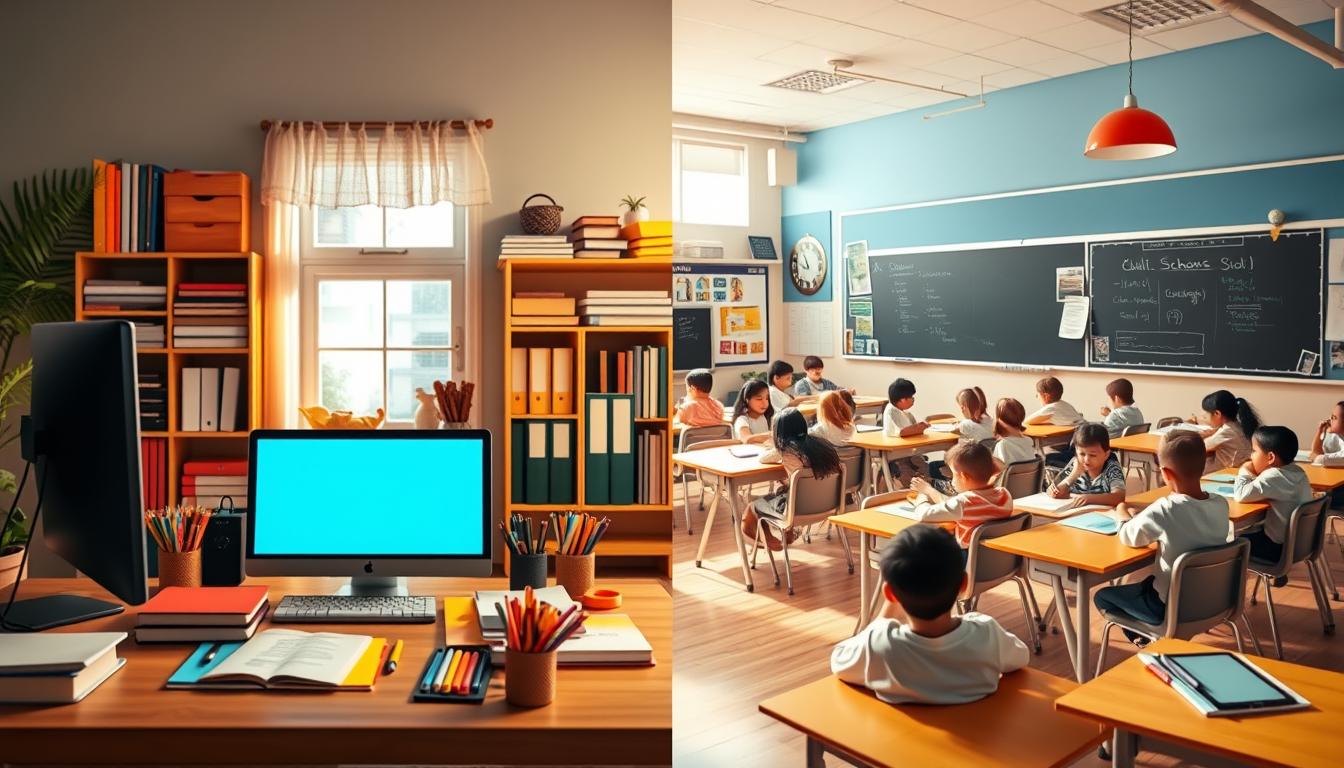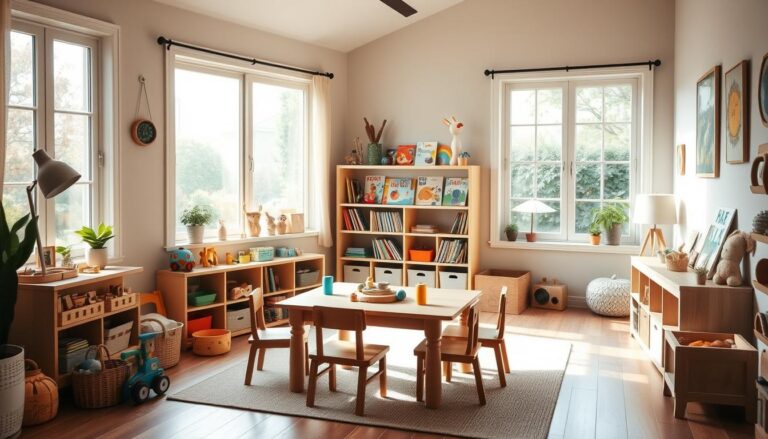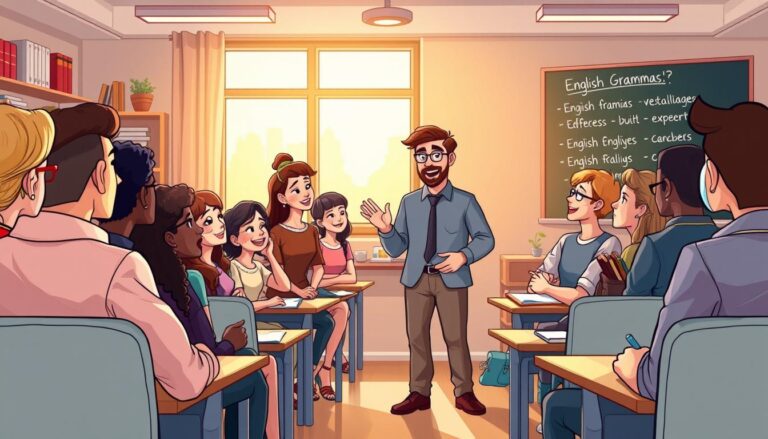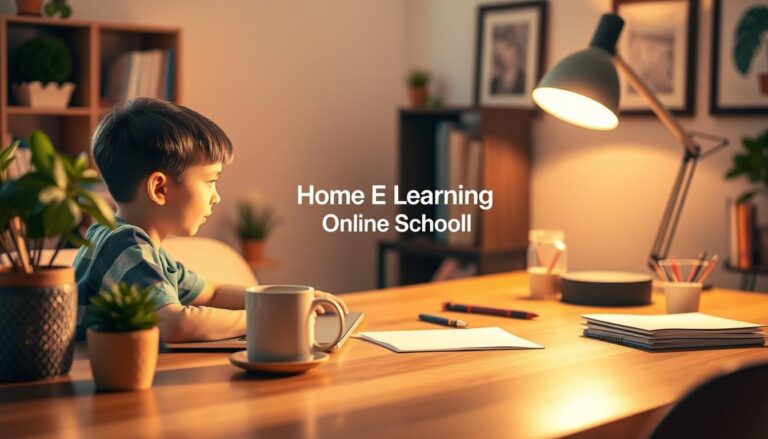Online school vs public school: What’s the best choice for your child?
In Mumbai, Priya and Rahul had to decide on their daughter’s education. They were torn between traditional schools and online learning. This choice is common among Indian parents today.
Choosing between online and public schools is now a big decision. Technology and new ways of learning have changed things. Parents need to think about many factors when deciding what’s best for their child.
Today, there are many ways to learn. Whether your child needs more attention or wants to meet friends, there’s a path for them. Parents must look at the good and bad of each option to make the right choice.
Key Takeaways
- Online and public schools offer distinct educational experiences
- Personalized learning can be achieved through both platforms
- Social development varies between online and traditional schooling
- Technological integration is crucial in modern education
- Individual student needs should drive educational choices
Understanding Traditional Public School Education
Traditional education in India is more than just reading books. Public schools are key in helping students grow both in school and socially. They offer a full learning experience through classroom lessons and more.
Core Academic Structure and Curriculum
The Indian public school system has a set curriculum. It aims to give students a strong base in learning. Key points include:
- Wide range of subjects
- Learning steps from early to high school
- Follows national education standards
- Regular tests and exams
Classroom Environment and Teaching Methods
Public schools use traditional teaching methods. The number of students per teacher is important. Schools try to give each student more attention.
“Education is not the filling of a pail, but the lighting of a fire.” – William Butler Yeats
Social Development and Extracurricular Activities
Public schools are great for socializing and growing. Extracurricular activities are key for students. They offer experiences outside of schoolwork:
- Sports teams and athletic programs
- Cultural and artistic clubs
- Music and performing arts groups
- Academic competition teams
- Community service initiatives
These activities help students learn important life skills. They build confidence and make friends that last a lifetime.
Advantages of online schools over offline schools
Choosing the right school for your child is a big decision. Virtual learning offers flexibility and personalized instruction. These are things traditional public schools often can’t match.
Parents now have to decide between online education platforms and traditional schools. The growth of educational technology has made online learning a strong option.
“Education is not about the method, but about empowering students to reach their full potential.”
There are key differences between online and public schools:
- Learning Environment Flexibility
- Personalized Instruction Approaches
- Technology Integration
- Individual Pace of Learning
Online schools are great at giving students a customized learning experience. They use advanced technology to create learning plans that fit each student’s needs. Students can learn at their own speed, which helps them understand better and feel less stressed.
Traditional public schools offer a structured learning environment. Online schools, on the other hand, create digital communities that connect students worldwide. Both have their own benefits, depending on what each student and family needs.
Parents looking for a personalized learning experience should think about online learning. It can change how students learn. The most important thing is to find a learning style that fits your child’s needs and goals.
The Rise of Virtual Learning in India: NIOS and Beyond
India’s education scene is changing fast with virtual classrooms and new learning sites. The National Institute of Open Schooling (NIOS) is leading this change. It helps students find remote schooling opportunities all over the country.
Virtual learning is becoming more popular. It gives students more freedom and access to education. Old limits like where you live and strict school rules are fading away. This opens up new ways to learn.
Benefits of NIOS for Indian Students
NIOS offers big benefits for students looking for different ways to learn:
- Flexible learning times for students who work
- Learning options for students with special needs
- Education for those in rural or hard-to-reach areas
“Education should adapt to students, not students to education” – NIOS Philosophy
Curriculum Flexibility and Subject Choices
NIOS lets students shape their own learning path. They can pick from many subjects. This way, they can focus on what they want to do in life.
Assessment Methods and Recognition
NIOS uses new ways to check if students have learned. It offers different ways to test students. This makes sure they really understand what they’re learning.
NIOS is getting more respect from colleges and employers. It’s helping to close the education gap. And it’s giving Indian students quality learning experiences.
Conclusion
Choosing the right educational path is a big decision. It involves many factors, including parent involvement. This is true for both online and traditional public schools.
School safety, costs, and how well a student does in school are also important. Parents need to think about these things when deciding.
Education in India is changing, with both online and traditional schools having their own benefits. Studies show that learning that’s tailored to each student can really help them do well. But, families also have to think about the cost of these options.
Technology is making learning more flexible and open. This means students can learn in ways that fit their needs and likes. The best way to learn depends on what each student needs to succeed.
Parents should be open to different learning options. Every child is different and has their own strengths and goals. By understanding what each child needs, families can help them grow and learn in today’s changing world.







